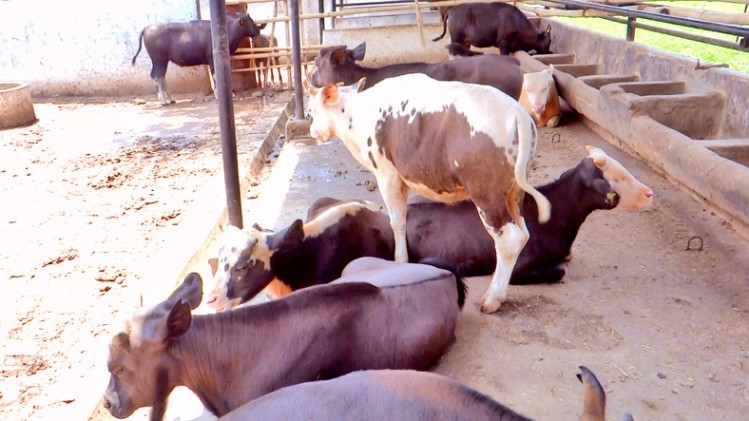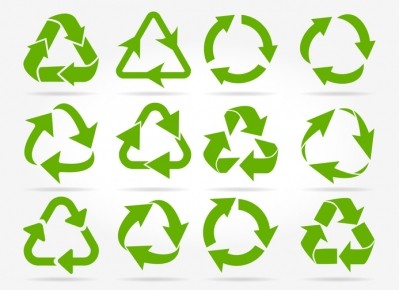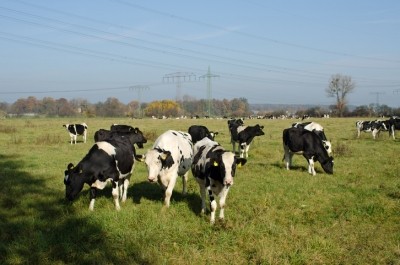India: Ration balancing boosts dairy producer profitability

Under Nation Dairy Plan-I, a project funded by the World Bank and Government of India, ‘ration balancing’ has been implemented in 18 states covering 2.6 million animals, with benefits to both producers and the environment.
According to India’s National Dairy Development Board (NDDB), which developed the software, in animals fed on a balanced ration, daily milk production has improved by 0.2-1.5kg and milk fat by 0.1-0.7% per unit. This, combined with a reduction in daily feed costs, has yielded an increase in net average daily profitability of 25-30 Indian Rupee ($0.37-0.44) per animal.
In addition, the program has helped to reduce enteric methane emissions by 12-15% per kg of milk in cows and buffaloes.
“Methane is the major greenhouse gas emitted during enteric fermentation in dairy animals. Ruminant animals lose 4-12% of gross energy intake in the form of methane, which is not only detrimental to the environment, but also results in energy loss to animals,” explained Rajesh Sharma, senior manager with the NDDB.
The issue with imbalance
In India, like many developing countries, animal feed usually comprises one or two locally available concentrate feed ingredients, grasses and crop residues. The problem with this, according to Sharma, is that this leads to “imbalanced feeding” in which levels of proteins, energy, minerals and vitamins are either too high or too low.
“While imbalanced feeding adversely affects the health and productivity of animals in various ways, it also reduces the net daily income to milk producers from dairying because the milk production potential of animals is not fully exploited,” he said.
The Ration Balancing Program (RBP) was initiated to educate milk producers on the implications of imbalanced feeding and the importance of giving animals a balanced diet.
Under the program, local village resource persons (LRPs) trained in the basics of animal feeding visit milk producers and register their animals in the NDDB’s animal identification system. The LRP then uses the ration balancing software to formulate an optimized ration based on body weight, milk production and milk fat content.
“RB software has an inbuilt feed data library containing nutritive values for more than 200 commonly available feeds and fodder as well as nutrient requirements for different animals. Based on the animal profile and different feeding practices, the software formulates a least cost balanced ration using a linear programming model,” explained Sharma.
Overcoming obstacles
The program, which started with pilot trials on 2010, has not been without its challenges.
“During initial stages, there was resistance among farmers against ear-tagging of animals and they were reluctant to adopt recommended feed advice given by the LRPs,” said Sharma.
However, he said that over time, farmers’ concerns had been assuaged via regular meetings and the tangible benefits such as lower feed costs, increased milk volumes and a higher milk fat content.
“This has attracted more and more milk producers and encouraged them to follow the instructions on a regular basis,” said Sharma.
He added that other benefits like reduced worm load, improved immunity, higher conception rates and improved SNF (solids not fat) in milk were additional success factors.
A second challenge has been the retention of LRPs.
“As LRPs are identified by milk unions, federations or producer companies, they need to be financially supported once NDP-I funding is over. Financially strong milk unions have made sufficient arrangements to retain them but weak agencies are finding it difficult and are in the process of exploring alternate mechanisms to continue the program,” said Sharma.
A blueprint for the world?
The program has now been implemented in the 18 major dairying states, accounting collectively for 90% of the country’s milk production. Sharma said that organizations involved in milk procurement in other states would consider taking up this initiative in future, and believes it has potential to be replicated in other parts of the globe.
“At present, the challenge for tropical countries is to adapt, deploy and integrate basic and scientific feeding practices, meeting the nutrient requirements of dairy animals to address future demand for milk and climate change issues. RBP could likely be replicated in other tropical countries and may be a powerful way to improve productivity of dairy animals in a sustainable manner, while realizing the genetic potential of dairy animals to lift smallholder farmers out of poverty.”








